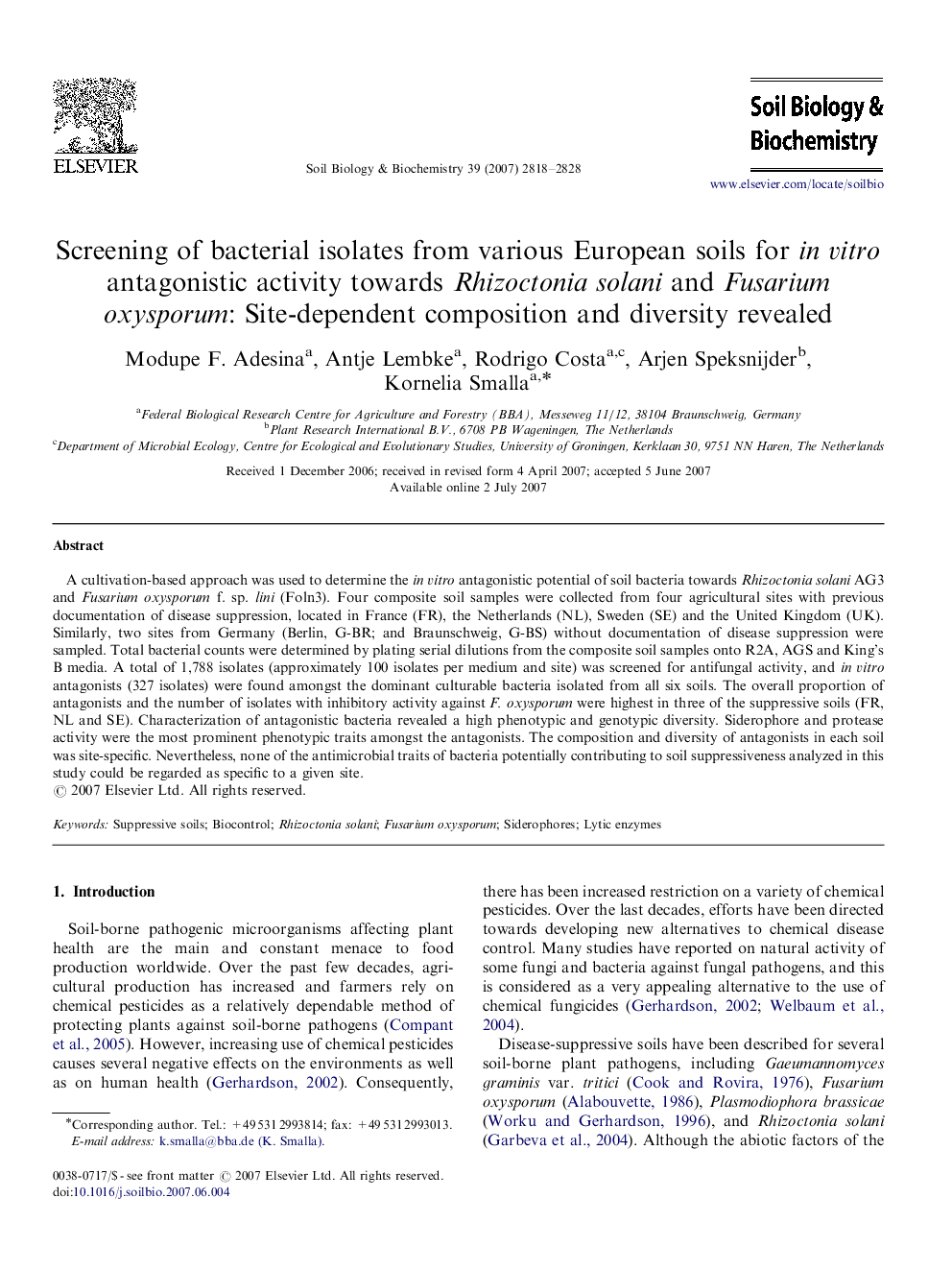| Article ID | Journal | Published Year | Pages | File Type |
|---|---|---|---|---|
| 2027030 | Soil Biology and Biochemistry | 2007 | 11 Pages |
A cultivation-based approach was used to determine the in vitro antagonistic potential of soil bacteria towards Rhizoctonia solani AG3 and Fusarium oxysporum f. sp. lini (Foln3). Four composite soil samples were collected from four agricultural sites with previous documentation of disease suppression, located in France (FR), the Netherlands (NL), Sweden (SE) and the United Kingdom (UK). Similarly, two sites from Germany (Berlin, G-BR; and Braunschweig, G-BS) without documentation of disease suppression were sampled. Total bacterial counts were determined by plating serial dilutions from the composite soil samples onto R2A, AGS and King's B media. A total of 1,788 isolates (approximately 100 isolates per medium and site) was screened for antifungal activity, and in vitro antagonists (327 isolates) were found amongst the dominant culturable bacteria isolated from all six soils. The overall proportion of antagonists and the number of isolates with inhibitory activity against F. oxysporum were highest in three of the suppressive soils (FR, NL and SE). Characterization of antagonistic bacteria revealed a high phenotypic and genotypic diversity. Siderophore and protease activity were the most prominent phenotypic traits amongst the antagonists. The composition and diversity of antagonists in each soil was site-specific. Nevertheless, none of the antimicrobial traits of bacteria potentially contributing to soil suppressiveness analyzed in this study could be regarded as specific to a given site.
